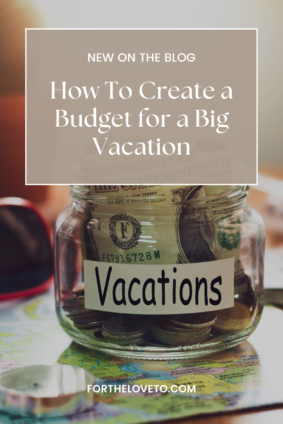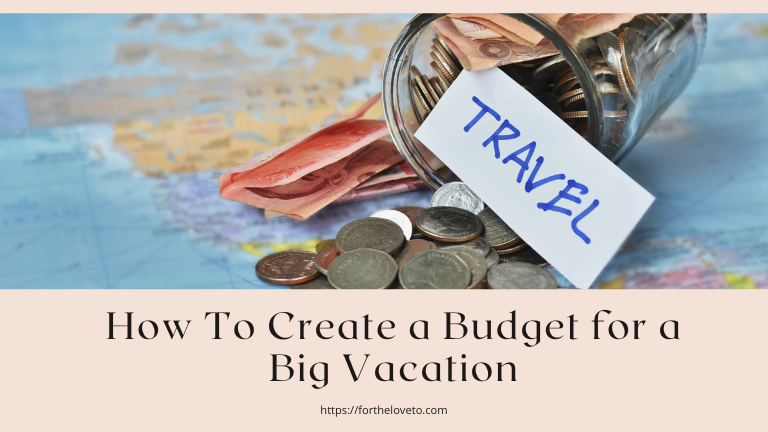Scenes of golden beaches or historic cities dance through my mind whenever I dream of a family holiday. However, the reality is often a list of expenses that provoke financial stress. Creating a budget for a big vacation is the key to turning your dream holiday into a reality without breaking the bank. I can assure you that thoroughly planning and saving for this extravagant adventure is worth the effort.
Step 1: Establish Your Vacation Goals
My dream family vacation was to travel through Europe. Museums, scenic landscapes, peaceful picnics at local parks, and even shopping in bustling cities were everything I wanted and more!
Your dream trip might look a little different. Start the budgeting process by envisioning your dream vacation, whether it’s a road trip to various National Parks or a luxurious cruise through the Caribbean.
The destination and duration of your stay will be the foundations of the budget. International destinations will include passport and visa costs. Theme parks or any tourist hotspots will encompass entrance fees and additional activity expenses.

Step 2: Calculate Total Costs
Start with the big-ticket items: flights and accommodation. Use travel websites to get a good average and add a little extra for unforeseen price increases or currency rate changes. The price of meals is the next big-ticket item.
See if breakfast is included at the hotel. Look at the prices of local restaurants to establish an estimate. Some families love the accommodation of a kitchenette for the opportunity to prepare their food and shave off several dollars with every meal.
You might want to explore daily pass alternatives, such as public transportation passes, to cut down on transportation costs. Renting a car provides more flexibility and decreases travel costs.
Step 3: Determine a Savings Timeline
With the total cost in hand, divide it by the number of months until the travel date. The result is your monthly savings goal. The different types of credit cards can also contribute to various financial objectives. A 0% APR is beneficial to finance a trip and pay it off gradually without accruing interest. Other credit cards offer features designed for travel purposes to earn cash back on everyday purchases.
Step 4: Identify Potential Cutbacks
Eliminating everyday unnecessary purchases or subscriptions is one of the best ways to save for a trip. I cut back on takeout lunches during the workday and started packing lunch instead. The whole family was more conscious about the foods we bought at the grocery store; we replaced expensive sugary snacks with affordable, healthy alternatives. Every dollar you save is a dollar contributed to the vacation fund. Small changes here and there will make a world of difference to your vacation budget.
The Value of Pre-Planning To Prevent Financial Strain
Fellow travelers must understand that creating a budget for a big vacation and thoroughly pre-planning is essential to avoid financial stress. A detailed itinerary paired with effective frugal travel tips will make every aspect of the trip a breeze. You’ll have all the money you need for an incredible experience with the ones you love.


Thank you for supporting my blog! Please note that this post contains affiliate links, and I may receive payments for clicks, purchases, and/or registrations made through these links. It’s important to mention that ForTheLoveTo.com is a proud participant in the Amazon Services LLC Associates Program, an affiliate advertising program designed to provide a means for sites to earn advertising fees by advertising and linking to Amazon.com. Your support enables me to continue creating valuable content, and I genuinely appreciate it.

Discover more from For The Love To
Subscribe to get the latest posts sent to your email.


